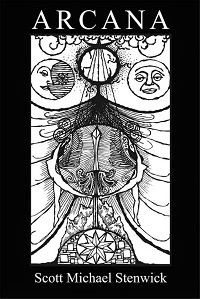"Mass hysteria" is the skeptic's go-to explanation for anything they don't understand. According to its proponents, mass hysteria arises unexpectedly, is poorly understood, and is a relatively rare phenomenon. It is supposedly "mental" or "psychological," and yet it can apparently produce significant physical changes within the human body. In short, it is pretty much the same thing as "mind over matter" or "faith healing" in reverse - as generally speaking, it tends to cause illness rather than cure it.
The cause of mass hysteria is said to be "the mind," but to be clear, the same exact thing can be said about psychic phenomena. So I contend that mass hysteria is essentially a paranormal explanation. It's just a paranormal explanation that skeptics happen to like. Slate has an article up today arguing that the alleged "sonic attacks" that affected U.S. embassy workers in Cuba back in 2016 were the result of this phenomena. But I think the author of it has failed to consider all of the ramifications of his conclusion.
To be clear, I'm not necessarily arguing that these "attacks" were really the result of a "sonic weapon." That part of the story does seem to fit the mass hysteria narrative with respect to individuals who later reported minor symptoms. Somebody came up with a hypothetical mechanism, and the story stuck. Once you start telling people to look out for something, their minds will focus on it and that can create effects akin to hypnotic suggestions. But the twitching girls case from 2011, the paralyzed girls case from 2007, and the Coca-Cola scare from 1999 mentioned in the article all differ from the "sonic attack" case in one key way - no physical injury, abnormality, or disorder was ever found among the sufferers. Doctors resorted to a psychological explanation when all of their tests failed to turn up anything.
That isn't true in the "sonic attack" case. There's evidence that brain scans of the early sufferers showed brain changes similar to those caused by concussions. In true skeptic fashion, the author of the article puts "medically confirmed" in scare quotes and claims that "brain scans were said to show" rather than "brain scans showed." That's likely because the existence of physical damage is an inconvenient fact that gets in the way of his mass hysteria hand-waving. Skeptics constantly accuse paranormal researchers of fraud, or of cherry-picking data. But this is exactly what they do when trying to make their "mass hysteria" arguments stick. They assume that because the data doesn't support their conclusion, it must be in error or fraudulently obtained. It's possible that some error was made when conducting the scans, but it's not very "skeptical" to make that assumption with no evidence at all.
Back in 1994, the case of Gloria Ramirez was being discussed in the news. Skeptics were on top of the story, explaining that the case was "obviously" the result of mass hysteria. This ignored the fact that one of the sufferers affected in the case developed hepatitis, pancreatitis, and avascular necrosis, a condition in which bone tissue is starved of blood and begins to die. While some of the hospital workers who developed minor symptoms may have been suffering from psychological effects brought on by stress, it strikes me as extremely dubious that a psychological mechanism alone could cause health problems of that magnitude. In 1995, chemists from Lawrence Livermore National Laboratory analyzed the case and came up with a plausible mechanism by which Ramirez' body could have produced a toxin that sickened at least some of the affected workers. Still, as of 2012 the skeptic website Skeptoid was still insisting that mass hysteria could be to blame.
What I don't see skeptics pointing out when they bring this up is that if mass hysteria does have the power to cause serious illnesses with easily measured physical effects, it means that all sorts of other things that skeptics don't like must also work. Faith healing, for example, is supposed to work the same way. But because skeptics don't like faith healing, they argue that form of mass hysteria is fraudulent because it can't produce lasting physical effects. But since they're allegedly the same mechanism, it stands to reason that either both can, or neither can. You don't get to have it both ways just because of personal bias. In fact, it's dangerous to suggest "mass hysteria" as a mechanism for any significant physical health issue, because it might impede doctors from delivering needed medical care - just like faith healing can lead people to rely on it for cures rather than seeking proper medical attention.
I think it's most likely that the chemical explanation is correct in the Ramirez case, and that some sort of physical effect or condition caused the injuries to at least the first victims in the "sonic attack" case. It should stand to reason that just because the initial explanation was probably wrong, on the grounds that such a "sonic weapon" has never been identified and it's not clear how one would work, that doesn't mean that no other physical explanation is possible. Also, just because some of the sufferers don't have any physical injuries and may be suffering from real mass hysteria, that doesn't mean that this is also true of the initial victims. Real skepticism would tease that out, and likely conclude that both physical and psychological effects are at play whenever solid physical evidence of illness or injury surfaces.
Paranormal effects are rare, hard to study, and have mechanisms that are poorly understood by conventional science. I would suggest that mass hysteria, particularly as employed by skeptics, fits this definition precisely, just like magick, ghosts, psychic powers, you name it. In all those cases I don't think we're dealing with anything "supernatural" - that is, beyond the bounds of what science can ever study. More likely, as our ability to make measurements of factors like mind and consciousness increases, scientific explanations will emerge for all of these weird phenomena. It might take a long time, though.
The cause of mass hysteria is said to be "the mind," but to be clear, the same exact thing can be said about psychic phenomena. So I contend that mass hysteria is essentially a paranormal explanation. It's just a paranormal explanation that skeptics happen to like. Slate has an article up today arguing that the alleged "sonic attacks" that affected U.S. embassy workers in Cuba back in 2016 were the result of this phenomena. But I think the author of it has failed to consider all of the ramifications of his conclusion.
A few weeks after the 2016 presidential election of Donald Trump, several people working for the U.S. Embassy in Cuba fell mysteriously ill. Some lost their hearing. Some had headaches and a pain in one ear. Others reported feeling dizzy or nauseous, having trouble focusing, or feeling fatigued. Later, some would have a hard time concentrating, remembering things, sleeping, and even walking. These symptoms were “medically confirmed,” as the State Department’s medical director Charles Rosenfarb put it, and brain scans were said to show abnormalities in the victims’ white matter, which transfers information between brain regions. The illnesses were believed by the government to be “health attacks,” carried out by a foreign power, though as Todd Brown, assistant director at the Bureau of Diplomatic Security, told the Senate Foreign Relations Committee, “investigative attempts and expert analysis failed to identify the cause or perpetrator.”
Nonetheless, investigators concluded the illnesses, which ultimately affected 24 people, were likely the result of a “sonic device.” This conclusion seems to be primarily due to the fact that some diplomats reported hearing a high-pitched noise in their homes and hotel rooms. Despite a lack evidence for such a weapon, or any known way it could affect white matter, the sonic weapon theory proved irresistible for both media outlets and for Cuba hawks like Sens. Marco Rubio and Bob Menendez, both of whom immediately transformed the sonic weapon into a handy political weapon. In the months following the “attacks,” new diplomats arriving in the country were warned of this sonic danger. Embassy employees were played a recording of what was thought to be the sound so they knew what to listen for. Soon, people at the Canadian Embassy in Cuba began reporting symptoms similar to what the Americans had experienced, as did a few tourists there. A husband and wife at the U.S. Embassy in Uzbekistan became ill as well. Whatever it was, it seemed to be spreading.
There is increasing recognition that these epidemics of hysteria, which usually mirror prominent social concerns, present real individual and public health problems. With no details, no motive, and no plausible explanation for what kind of weapon this might be, doubts began to surface. The FBI investigated and reportedly found there had been no such attack (though it suggested maybe it was a “viral” weapon). Sen. Jeff Flake also cast doubts on the sonic version of events. A handful of skeptical stories began to appear amid the more alarming ones, suggesting this might be what in the past was known as, “mass hysteria,” but which is now referred to as “mass psychogenic illness,” or a “collective stress response.” (These include things like the twitching girls in Le Roy, New York, in 2011; the 600 paralyzed girls in Mexico in 2007; and the Belgian Coca-Cola scare of 1999, which affected 100 students with more than 900 others reporting a related symptom, and costing the company somewhere between $103 million and $250 million.)
To be clear, I'm not necessarily arguing that these "attacks" were really the result of a "sonic weapon." That part of the story does seem to fit the mass hysteria narrative with respect to individuals who later reported minor symptoms. Somebody came up with a hypothetical mechanism, and the story stuck. Once you start telling people to look out for something, their minds will focus on it and that can create effects akin to hypnotic suggestions. But the twitching girls case from 2011, the paralyzed girls case from 2007, and the Coca-Cola scare from 1999 mentioned in the article all differ from the "sonic attack" case in one key way - no physical injury, abnormality, or disorder was ever found among the sufferers. Doctors resorted to a psychological explanation when all of their tests failed to turn up anything.
That isn't true in the "sonic attack" case. There's evidence that brain scans of the early sufferers showed brain changes similar to those caused by concussions. In true skeptic fashion, the author of the article puts "medically confirmed" in scare quotes and claims that "brain scans were said to show" rather than "brain scans showed." That's likely because the existence of physical damage is an inconvenient fact that gets in the way of his mass hysteria hand-waving. Skeptics constantly accuse paranormal researchers of fraud, or of cherry-picking data. But this is exactly what they do when trying to make their "mass hysteria" arguments stick. They assume that because the data doesn't support their conclusion, it must be in error or fraudulently obtained. It's possible that some error was made when conducting the scans, but it's not very "skeptical" to make that assumption with no evidence at all.
Back in 1994, the case of Gloria Ramirez was being discussed in the news. Skeptics were on top of the story, explaining that the case was "obviously" the result of mass hysteria. This ignored the fact that one of the sufferers affected in the case developed hepatitis, pancreatitis, and avascular necrosis, a condition in which bone tissue is starved of blood and begins to die. While some of the hospital workers who developed minor symptoms may have been suffering from psychological effects brought on by stress, it strikes me as extremely dubious that a psychological mechanism alone could cause health problems of that magnitude. In 1995, chemists from Lawrence Livermore National Laboratory analyzed the case and came up with a plausible mechanism by which Ramirez' body could have produced a toxin that sickened at least some of the affected workers. Still, as of 2012 the skeptic website Skeptoid was still insisting that mass hysteria could be to blame.
What I don't see skeptics pointing out when they bring this up is that if mass hysteria does have the power to cause serious illnesses with easily measured physical effects, it means that all sorts of other things that skeptics don't like must also work. Faith healing, for example, is supposed to work the same way. But because skeptics don't like faith healing, they argue that form of mass hysteria is fraudulent because it can't produce lasting physical effects. But since they're allegedly the same mechanism, it stands to reason that either both can, or neither can. You don't get to have it both ways just because of personal bias. In fact, it's dangerous to suggest "mass hysteria" as a mechanism for any significant physical health issue, because it might impede doctors from delivering needed medical care - just like faith healing can lead people to rely on it for cures rather than seeking proper medical attention.
I think it's most likely that the chemical explanation is correct in the Ramirez case, and that some sort of physical effect or condition caused the injuries to at least the first victims in the "sonic attack" case. It should stand to reason that just because the initial explanation was probably wrong, on the grounds that such a "sonic weapon" has never been identified and it's not clear how one would work, that doesn't mean that no other physical explanation is possible. Also, just because some of the sufferers don't have any physical injuries and may be suffering from real mass hysteria, that doesn't mean that this is also true of the initial victims. Real skepticism would tease that out, and likely conclude that both physical and psychological effects are at play whenever solid physical evidence of illness or injury surfaces.
Paranormal effects are rare, hard to study, and have mechanisms that are poorly understood by conventional science. I would suggest that mass hysteria, particularly as employed by skeptics, fits this definition precisely, just like magick, ghosts, psychic powers, you name it. In all those cases I don't think we're dealing with anything "supernatural" - that is, beyond the bounds of what science can ever study. More likely, as our ability to make measurements of factors like mind and consciousness increases, scientific explanations will emerge for all of these weird phenomena. It might take a long time, though.

























No comments:
Post a Comment